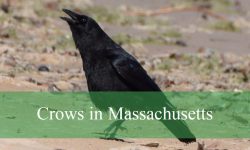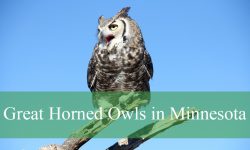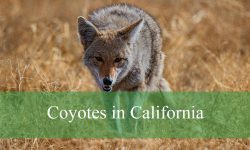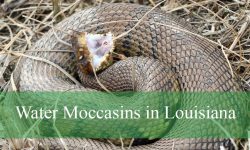In the rugged mountains, vast forests, and rolling plains of Montana lives one of North America’s most curious and misunderstood mammals—the porcupine (Erethizon dorsatum). Known for its coat of sharp quills and slow, lumbering gait, the porcupine might seem like an easy target for predators. But appearances can be deceiving. This quiet herbivore is a master of self-defense, adaptation, and survival in some of the harshest climates of the American West.
Porcupines are far more fascinating than many people realize. From their surprising swimming abilities to their tree-climbing skills, and even their role in the forest ecosystem, these animals have a story worth telling. Montana, with its mix of forests, mountains, and grasslands, provides an ideal home for them—one filled with secrets that even locals might not know.
In this comprehensive guide, we’ll explore facts about porcupines in Montana most people don’t know, revealing their behavior, diet, habitat, and the myths that surround them. By the end, you’ll understand why these spiny creatures are essential to Montana’s wilderness and why they deserve respect rather than fear.
Understanding the Montana Porcupine
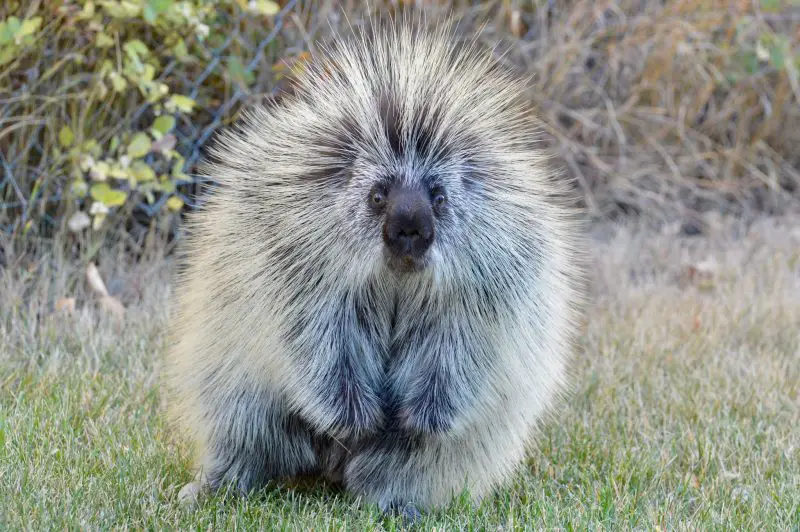
Species Overview
The porcupine found in Montana is the North American porcupine, one of the largest rodents on the continent, second only to the beaver. Adults typically weigh between 12 and 35 pounds and measure up to 36 inches long, including their tail. Despite their slow movements, porcupines are excellent climbers and swimmers, with strong claws and partially webbed feet that help them navigate both trees and rivers.
Their bodies are covered in up to 30,000 sharp quills, each tipped with tiny backward-facing barbs. Contrary to popular myth, porcupines cannot shoot their quills. Instead, they raise and release them when threatened. When a predator or curious animal gets too close, the quills detach easily and embed deeply, deterring most attackers from ever trying again.
Appearance and Adaptations
Porcupines have coarse brown or black fur mixed with white-tipped quills, giving them a frosted appearance. In winter, their coats become thicker and fluffier, helping them withstand Montana’s cold and snow.
They have poor eyesight but excellent hearing and an acute sense of smell. Their large front teeth continuously grow, allowing them to gnaw through wood, bark, and vegetation without wearing down.
Distribution in Montana
Porcupines inhabit nearly every region of Montana—from the Rocky Mountains to the Great Plains and Yellowstone River Valley. They are especially common in wooded areas with plentiful trees for food and shelter, such as:
- Gallatin National Forest
- Flathead National Forest
- Beaverhead-Deerlodge National Forest
- Lewis and Clark National Forest
They prefer coniferous and mixed forests but also adapt well to grasslands and riverbanks, where they feed on shrubs and aquatic plants.
Behavior and Lifestyle
Mostly Nocturnal
Porcupines are primarily nocturnal, active at night when they forage for food. During the day, they rest in hollow trees, rocky crevices, or abandoned burrows. In Montana, where predators such as mountain lions and coyotes are common, being active at night helps them stay safe.
Solitary by Nature
Unlike many mammals, porcupines are solitary animals. Each adult maintains a territory marked with scent glands to deter others. However, during the breeding season, males and females may share overlapping ranges temporarily. In winter, porcupines sometimes den together for warmth, especially during extreme cold spells.
Defense Mechanisms
When threatened, a porcupine’s first instinct isn’t to attack—it’s to warn. They will:
- Raise their quills to appear larger.
- Chatter their teeth as an audio warning.
- Emit a strong odor from glands near the tail.
If the threat persists, the porcupine will lash its tail, embedding quills in its attacker. This passive yet effective defense system has kept them alive for millennia.
Diet and Feeding Habits
Herbivores with Specific Tastes
Porcupines are strict herbivores, feeding mainly on:
- Tree bark, twigs, and leaves.
- Herbs, grasses, and shrubs during warmer months.
- Inner tree layers (cambium) during winter when food is scarce.
In Montana, they particularly enjoy the bark of ponderosa pine, aspen, and cottonwood trees. Their feeding habits can leave noticeable chew marks on tree trunks, which foresters often recognize as signs of porcupine activity.
Seasonal Adaptation
Their diet changes with the seasons:
- Spring and Summer: Abundant green vegetation and fruits.
- Autumn: Roots, tubers, and leftover crops in farmlands.
- Winter: Tree bark and evergreen needles when other food sources disappear.
Despite their destructive feeding behavior, porcupines play a vital role in forest ecosystems by promoting tree regeneration. By feeding selectively, they thin out weaker trees, allowing stronger ones to thrive.
Reproduction and Life Cycle
Breeding Season
Porcupine mating season in Montana occurs from September to November. Males compete for access to females, often engaging in noisy vocal displays and even physical fights. To attract mates, males release pheromones and perform courtship dances—lifting their tails and quills while circling the female.
Gestation and Birth
After a seven-month gestation, females give birth to a single offspring, known as a porcupette, in late spring or early summer. Remarkably, porcupettes are born fully furred, with soft quills that harden within hours.
Early Development
The young porcupine begins eating solid food within a few weeks but remains with its mother for several months, learning how to find food and climb trees. By autumn, the young are independent and ready to establish their own territories.
Porcupines and Predators
Natural Enemies
Despite their formidable quills, porcupines do have natural predators. In Montana, these include:
- Fishers – agile weasels that can flip porcupines to attack their unprotected bellies.
- Coyotes – use teamwork to distract and attack.
- Mountain lions – capable of ambushing from above.
- Great horned owls – occasionally prey on young porcupines.
Human Interaction
In the past, porcupines were hunted for their quills, used by Native American tribes for intricate beadwork and art. Their meat was also a food source in survival situations. Today, they are mostly left alone, though they can cause property damage by gnawing on wooden structures or vehicle handles for salt.
Montana wildlife agencies encourage coexistence and discourage harming porcupines, reminding residents that these animals are a natural and important part of the environment.
Adaptations to Montana’s Harsh Climate
Surviving the Cold
Montana winters can be unforgiving, but porcupines are built for endurance. Their thick fur and layer of body fat provide excellent insulation. They spend much of winter in dens, venturing out mainly at night to feed on bark and evergreen needles.
Their metabolism slows, reducing the need for food, but they do not hibernate. Instead, they enter a state of torpor, conserving energy while remaining alert enough to respond to predators.
Tree-Climbing Skills
Porcupines are superb climbers. Their curved claws and rough paw pads provide a strong grip, allowing them to climb high into trees to feed and rest safely. Even heavy snowfall doesn’t deter them—they often move from tree to tree without touching the ground.
Myths and Misconceptions
Myth 1: Porcupines Shoot Their Quills
False. Porcupines cannot shoot quills. The quills detach easily upon contact, but only if the animal is touched or attacked.
Myth 2: They Are Aggressive
False. Porcupines are shy and prefer to avoid confrontation. They only use their quills defensively when threatened.
Myth 3: Porcupines Damage Forests
Partially true. While they can cause localized tree damage, their selective feeding often benefits forests by improving tree diversity and health.
Myth 4: They Are Pests
False. Porcupines are crucial to the ecosystem. They recycle nutrients and provide food for predators. Their old dens also serve as shelter for other animals like foxes and raccoons.
Porcupines and the Montana Ecosystem
Ecological Role
Porcupines help maintain forest balance by feeding on tree bark and pruning branches. This natural process stimulates new growth and prevents overcompetition among trees.
Their abandoned dens become homes for small mammals and birds, while their quills and carcasses provide nutrients for the soil. Even in death, porcupines contribute to Montana’s wilderness.
Indicator Species
Because they rely on healthy forests and clean water, porcupines are considered indicator species. Their presence signals a stable and thriving ecosystem—something Montana residents value deeply.
Conservation and Management
Population Status
Porcupines are not endangered in Montana. Populations remain stable thanks to the state’s extensive wildlands and protective regulations. However, vehicle collisions and habitat loss from logging and development can pose local threats.
Conservation Efforts
The Montana Fish, Wildlife & Parks Department monitors porcupine populations as part of broader wildlife surveys. Conservationists advocate for preserving old-growth forests and reducing road mortality through wildlife crossings and awareness campaigns.
Coexisting with Porcupines
To coexist peacefully:
- Protect trees by wrapping trunks with wire mesh if porcupines are feeding on bark.
- Avoid using poison or traps.
- Appreciate their role in pest control and forest regeneration.
Fun and Lesser-Known Facts About Montana Porcupines
- They can swim! Porcupines’ hollow quills trap air, making them buoyant.
- Each quill has antibiotics. This prevents infections from accidental self-injury.
- They are great communicators. They use grunts, whines, and clicks to express moods.
- Porcupines love salt. They often chew on salty wooden handles, canoe paddles, and even car tires.
- Their front teeth glow orange. The color comes from iron deposits that strengthen the enamel.
- They help forests grow. By pruning trees and spreading seeds, they shape Montana’s woodland landscape.
- They are one of the few animals active all winter long.
FAQs About Porcupines in Montana
Are porcupines dangerous to humans?
No. They are shy and defensive, not aggressive. Injuries occur only if handled or approached too closely.
Can porcupines climb trees?
Yes, they are excellent climbers, spending much of their time in trees feeding on bark and buds.
What should I do if I find one near my home?
Leave it alone. If necessary, gently encourage it away by making noise or spraying water from a distance.
Are porcupines good for the environment?
Absolutely. They help maintain forest balance, recycle nutrients, and provide shelter for other species.
Do they hibernate during winter?
No, they remain active but less mobile, emerging mostly at night.
Can pets get quilled?
Yes, dogs that chase porcupines may get quills embedded in their faces. Seek veterinary help immediately—never pull quills out by hand.
Conclusion
Porcupines in Montana are living proof that nature’s quiet creatures often hold the most fascinating secrets. From their quill-covered defenses to their surprising intelligence and ecological importance, these gentle herbivores play a crucial role in keeping Montana’s wilderness healthy and balanced.
Their misunderstood reputation belies their true character—peaceful, curious, and vital to the ecosystem. Whether you encounter one in a pine forest or near a mountain trail, take a moment to appreciate this remarkable animal. It’s not just another woodland resident; it’s a symbol of resilience and balance, thriving silently beneath Montana’s endless skies.

